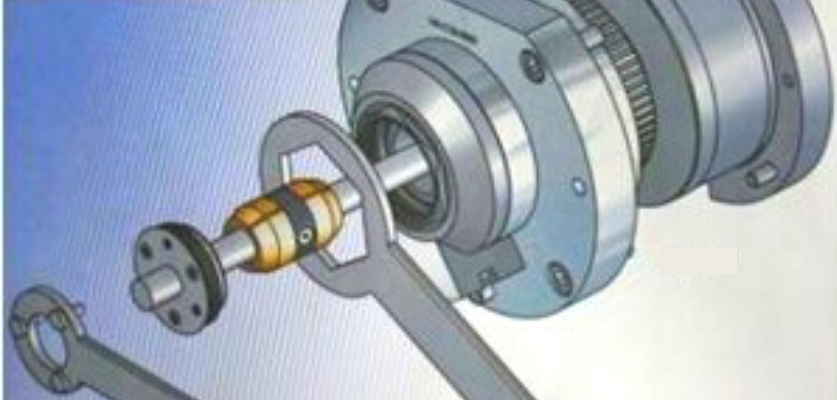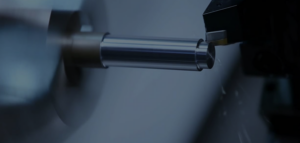The Importance of the Guide Bushing in Swiss Screw Machines
Back in 2011, Citizen Machinery Company introduced an adaptive guide bushing designed to help eliminate the costs associated with processing non-ground bar stock. Citizen is a machine tool specialist and a leader in CNC turning technology.
That adaptive guide bushing is no longer new. However, a recent visit to Citizen’s national headquarters (minutes from our factory) to review some specifications for one of our machines got us thinking about the importance of the guide bushing. What is the function of this often underrecognized feature?
Here’s the story.
Issues of Deflection in Material Removal
A workpiece that is subjected to force will deflect, setting the workpiece off course. If the cutting force causes too much deflection, the excessive deflection will affect the accuracy of the cut.
Picture it: If you firmly hold a workpiece at one end and push sideways on the unsupported end, the workpiece will bend X amount. Push with the same force on a longer workpiece having the same diameter and the workpiece will bend even more.
In fact, when the distance from the support to the force is twice as long, the same force will produce eight times the deflection. So, if a force applied to the end of a 2.0″ (50.8 mm) part causes 0.001″ (0.0254 mm) of deflection, the same force applied to the end of a 4.0″ (101.6 mm) will cause 0.008″ (0.2032 mm) of deflection.
Compensating for Deflection
To compensate for deflection, most cutting methods — including Swiss machining — make several slow passes to remove material. However, making additional passes also increases the margin of error, particularly over long part lengths.
The generally accepted “rule” for a conventional lathe says that when you are turning precision metal components that have a length-to-diameter ratio greater than 3:1, you should use a tailstock to prevent excessive deflection. Where the length-to-diameter ratio is greater than 6:1, you should support the middle of the parts using a steady rest or follow rest.
The chucking collet, which provides stability to the workpiece, was added to Swiss machine shops back in the 1870s to reduce deflection. Today, modern Swiss screw machines further improve efficiency and accuracy with the addition of the guide bushing, which provides rigidity to the material by supporting it close to the tool.
Read more about how CNC Swiss machining small parts has evolved in The Swiss Machine in Today’s Machine Shop.
How the Guide Bushing Works in Swiss CNC Metal Machining
The purpose of the guide bushing is to support the workpiece and maintain precision throughout the machining of the workpiece.
With small parts machining in a Swiss machine shop, the guide bushing supports the workpiece so close to the tool that deflection due to the cutting force is essentially reduced to zero. Therefore, the cutting tool can make one deep pass rather than several shallow ones, so that it:
- Makes a single cut while maintaining precise dimensions on the part
- Reduces tool wear, helping to ensure more consistency and precision
Optimizing the Guide Bushing
The accuracy of a guide bushing is indicated by coaxiality, a measure of the concentricity of multiple diameters along a theoretical axis. In order to consistently hold micron tolerances over time, guide bushings should have a coaxiality of 0.0002”.
There are a number of types of guide bushings:
- Rotary guide bushings rotate simultaneously with the workpiece and are best used when turning wider parts, with tolerances greater than ±0.0005”.
- Fixed guide bushings remain stationary while the bar stock spins and are best for when tighter tolerances are required.
- High precision guide bushings are available for difficult materials or tough tolerances, such as those required for the manufacture of small parts used as components in medical device or orthopedics.
In addition, dimensional accuracy requires proper configuration, adjustment, and monitoring of the CNC Swiss machine. For example, where micron-level tolerances can make repeatability a challenge, a tactic called segmentation — where one portion of the workpiece at a time is fabricated as it advances — is used to leverage the guide bushing to improve consistency.
Advantages of CNC Swiss Machining with a Guide Bushing
The guide bushing combined with the geometry and mechanics of the tool zone allows CNC Swiss machining to offer a number of advantages. For example:
- Some machines offer 20 or more tools.
- A single heavy cut often removes all the necessary material.
- An excellent surface finish can eliminate the need for grinding.
- Simultaneous operations and tools streamline the cutting of complex parts.
- The elimination of secondary operations can speed production and reduce costs.
- Many parts come off the machine ready to ship.
To learn more about how CNC Swiss machining could streamline your processes and help you achieve your precision requirements, download our technical article on some of Swiss Screw Machining’s most frequently asked questions.






